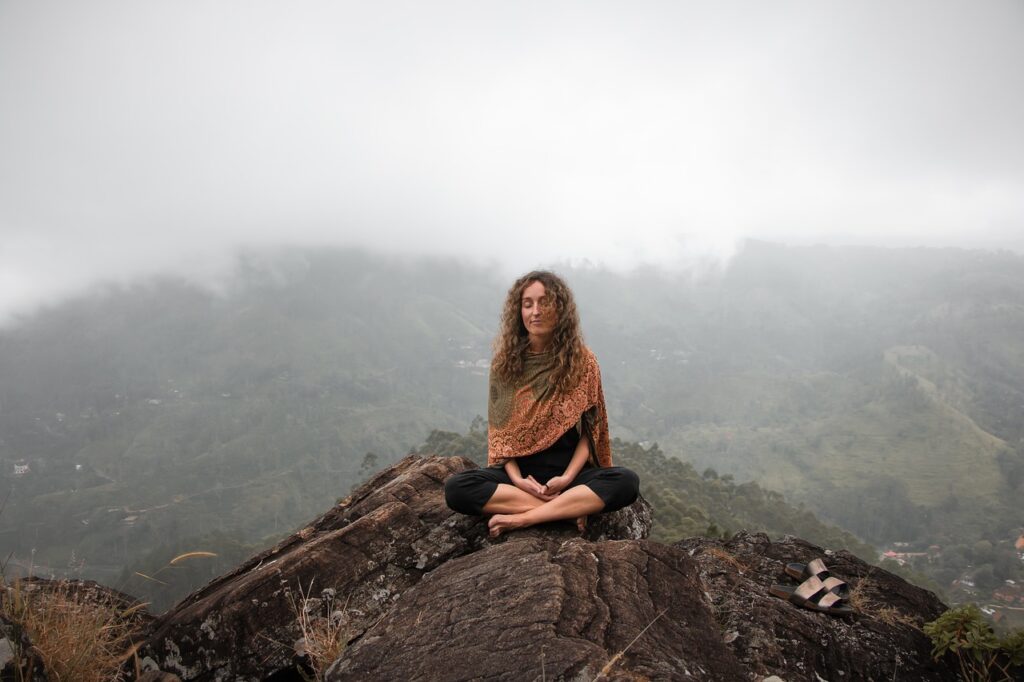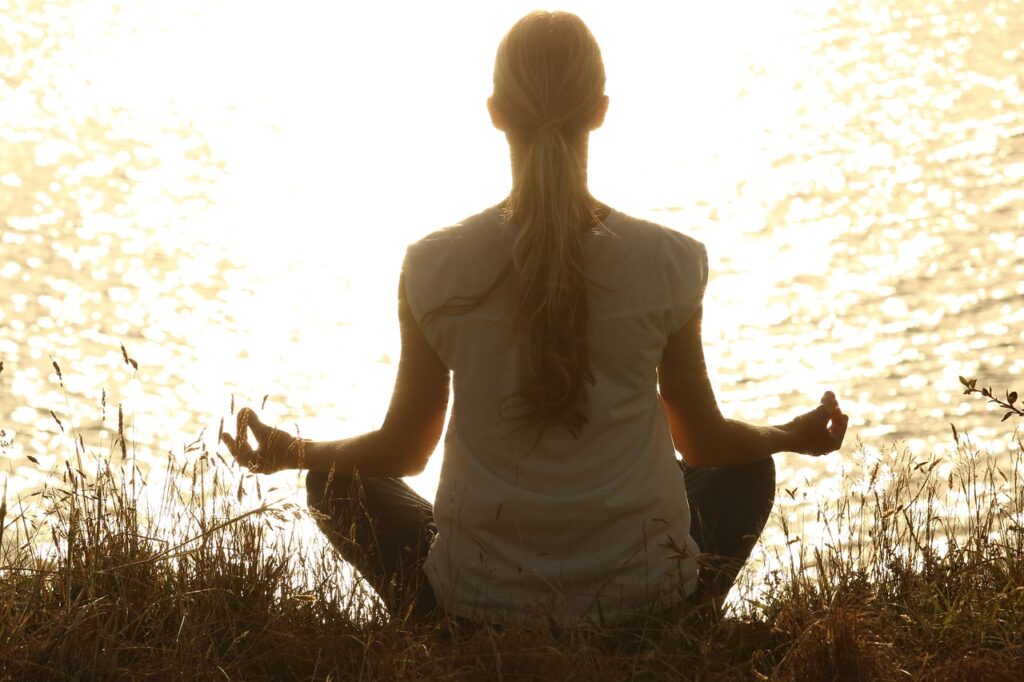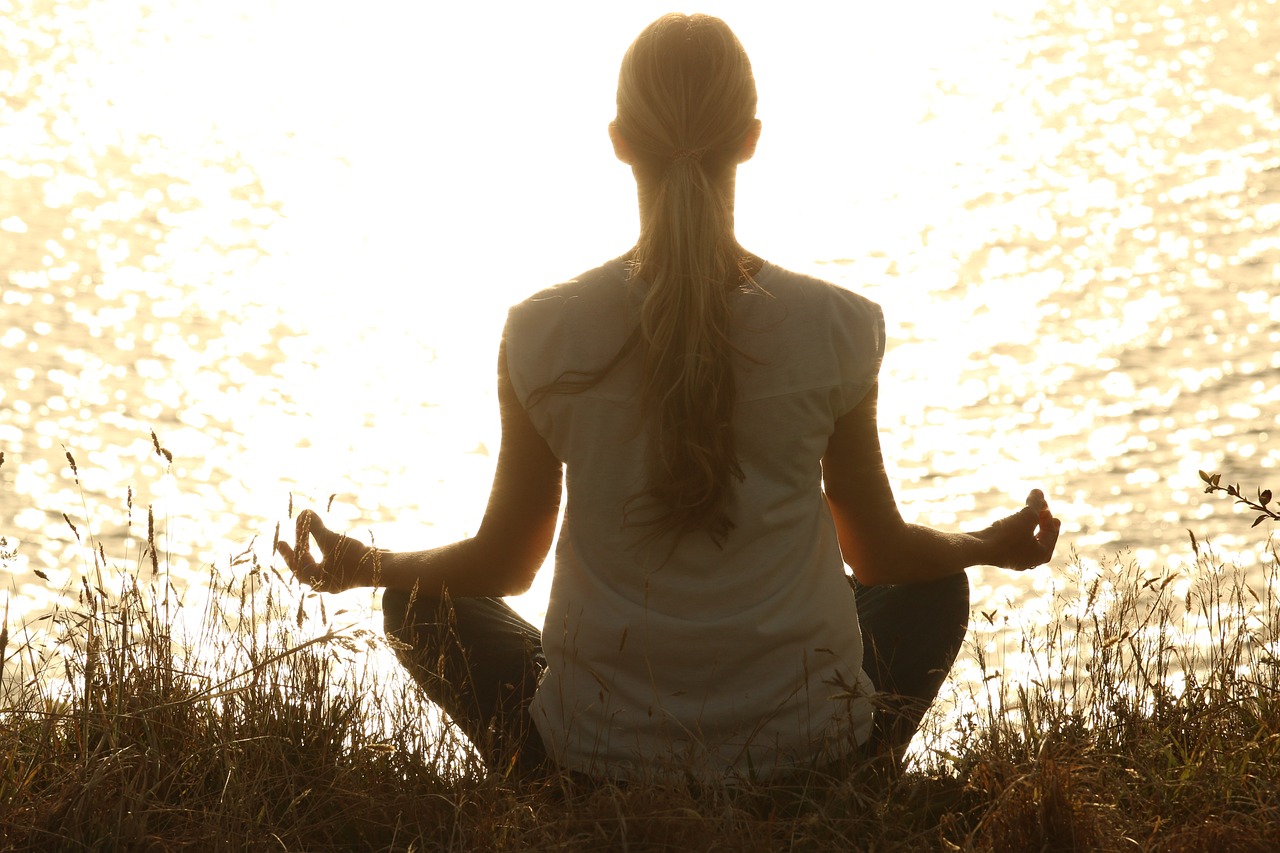If you’ve ever wondered how yoga poses can enhance your breathing and increase your lung capacity, you’re in the right place. In this article, we will explore the incredible benefits of practicing yoga on your respiratory system. From deepening your breath and strengthening your lung muscles to improving oxygen flow and reducing stress, you’ll discover why incorporating yoga into your routine can lead to a healthier and more vibrant life. So roll out your mat, take a deep breath, and let’s uncover the transformative power of yoga poses on your breathing and lung capacity.

The Importance of Breathing and Lung Capacity
Breathing is an essential function of our bodies that often goes unnoticed. We rarely pay attention to the way we breathe, but the truth is, proper breathing and lung capacity are crucial for our overall health and well-being. Whether you are a yoga enthusiast or just someone looking to improve your respiratory health, understanding the role of breathing in yoga and the benefits of improved lung capacity can greatly impact your life.
The Role of Breathing in Yoga
Yoga is not just about stretching and bending; it is a holistic practice that encompasses various aspects of our well-being, including our breath. In yoga, breathing is regarded as a vital life force, connecting our mind, body, and spirit. It is through the breath that we can find a sense of calm, focus, and balance. Deep, conscious breathing is a fundamental part of any yoga practice and can help us cultivate a deeper connection within ourselves.
Breathing techniques, or pranayama, play a significant role in yoga. By practicing different breathing exercises, we can learn to control and regulate our breath, allowing us to achieve a state of relaxation and enhance our lung capacity. These techniques not only benefit us during our yoga practice but also have positive effects on our daily lives, improving our overall well-being.
The Benefits of Improved Lung Capacity
Having a healthy lung capacity is essential for maintaining good respiratory health. The more efficient our lungs are at taking in oxygen and expelling carbon dioxide, the better our overall health and vitality. Improved lung capacity through yoga poses can offer numerous benefits, including:
-
Enhanced physical performance: Increased lung capacity allows for more oxygen to be delivered to our muscles, boosting their performance during physical activities or exercise.
-
Improved focus and concentration: Deep, controlled breathing helps calm the mind and enhances our ability to concentrate, which can be particularly beneficial for activities that require mental clarity.
-
Increased energy levels: Proper breathing provides a constant flow of fresh oxygen, revitalizing the body and increasing energy levels.
-
Stress reduction: Deep breathing triggers the relaxation response in our bodies, reducing stress and promoting a sense of calm and well-being.
-
Improved immune function: Deep, diaphragmatic breathing stimulates the lymphatic system, enhancing the body’s ability to eliminate toxins and boost immunity.
-
Better sleep: Breathing exercises before bed can help calm the mind and relax the body, promoting a more restful and rejuvenating sleep.
Yoga Poses that Enhance Breathing and Lung Capacity
Now that we understand the importance of breathing and improved lung capacity, let’s explore some yoga poses that specifically target these areas, helping us strengthen our respiratory muscles and enhance our overall breathing techniques.
Dirga Pranayama (Three-Part Breath)
Dirga Pranayama, also known as the Three-Part Breath, focuses on expanding the breath into three areas of the torso: the belly, ribcage, and chest. This technique helps us cultivate a deep and rhythmic breath, expanding our lung capacity and improving oxygen intake.
To practice Dirga Pranayama, find a comfortable seated position. Place one hand on your belly and the other on your chest. Inhale deeply, allowing your belly to rise first, followed by the expansion of your ribcage, and finally, the rise of your chest. Exhale, releasing the air from your chest, ribcage, and finally, your belly. Repeat this cycle for several rounds, focusing on the smooth and even flow of your breath.
Kapalabhati (Skull Shining Breath)
Kapalabhati is a powerful breathing technique that involves short, forceful exhalations and passive inhalations. This technique detoxifies the respiratory system, increases lung capacity, and energizes the body.
To practice Kapalabhati, sit in a comfortable position with your spine straight. Close your eyes and take a few deep breaths to center yourself. Begin by exhaling forcefully through your nose, drawing your navel in towards your spine. Follow this with a passive inhalation, allowing the breath to enter naturally. Continue this cycle, focusing on the forceful exhalations, for a few rounds. Gradually increase the speed and intensity as you become more comfortable with the technique.
Ujjayi Pranayama (Victorious Breath)
Ujjayi Pranayama, also known as the Victorious Breath, is a diaphragmatic breathing technique that produces a gentle, ocean-like sound. This technique helps regulate the breath, expand lung capacity, and create a sense of calmness and focus.
To practice Ujjayi Pranayama, find a comfortable seated position. Take a deep breath in through your nose and exhale through your mouth, as if you’re fogging up a mirror. Once you have a sense of this exhale, close your mouth and repeat the same action, this time using your nasal passage for both inhales and exhales. As you exhale through your nose, create a slight constriction at the back of your throat, allowing the breath to pass through, producing the ocean-like sound. Inhale deeply, feeling your belly, ribcage, and chest expand. Exhale slowly, maintaining the gentle constriction in your throat. Repeat this cycle for several rounds, feeling the calming effects it has on your mind and body.
Bhastrika Pranayama (Bellows Breath)
Bhastrika Pranayama, or the Bellows Breath, is an energizing breathing technique that involves forceful inhales and exhales through the nose. This practice helps strengthen the lungs, improve respiratory function, and increase overall lung capacity.
To practice Bhastrika Pranayama, sit in a comfortable position, with your spine erect. Begin by taking a deep breath in, expanding your belly, and then forcefully exhaling through your nose. Follow this with a quick and forceful inhale. Continue this rapid cycle of inhaling and exhaling through your nose, allowing your breath to be effortless and steady. Start with a moderate pace and gradually increase the speed as you become more comfortable.
Anulom Vilom (Alternate Nostril Breathing)
Anulom Vilom, also known as Alternate Nostril Breathing, is a technique that balances the breath by alternating the flow of breath through each nostril. This practice helps harmonize the energy in the body, enhances lung capacity, and calms the mind.
To practice Anulom Vilom, sit in a comfortable position, with your spine upright. Use your right thumb to close your right nostril and inhale deeply through your left nostril. Close your left nostril with your ring finger and exhale through your right nostril. Inhale through your right nostril, close it with your thumb, and exhale through your left nostril, creating a continuous cycle. Continue this for several rounds, focusing on the smooth and balanced flow of breath.
Nadi Shodhana (Channel Cleaning Breath)
Nadi Shodhana, also known as Channel Cleaning Breath or Alternate Nostril Breathing, is a practice that balances and purifies the energy channels within the body. This technique increases lung capacity, improves respiratory function, and promotes overall well-being.
To practice Nadi Shodhana, sit comfortably with your spine straight. Rest your left hand on your left knee, palms facing upward, and bring your right hand to your face. Use your right thumb to close your right nostril and inhale deeply through your left nostril. Close your left nostril with your ring finger and release your right nostril, exhaling through it. Inhale through your right nostril, close it with your thumb, and exhale through your left nostril. Repeat this cycle, alternating between the nostrils, for several rounds, focusing on the smooth and balanced flow of breath.
Deep Breathing Poses
Various yoga poses, such as Tree Pose, Cobra Pose, and Warrior II Pose, can help enhance deep breathing and lung capacity. These poses stretch and strengthen the respiratory muscles, allowing for a greater inhalation and exhalation.
To practice deep breathing poses, start with a comfortable standing position, bringing awareness to your breath. As you inhale, feel your body expand and elongate. As you exhale, relax and release any tension. Incorporate deep breaths into your yoga practice, allowing your breath to guide and support your movements.

How Yoga Poses Improve Breathing and Lung Capacity
Yoga poses are not merely stretching exercises; they also have a profound impact on our respiratory health by improving breathing and lung capacity. Here are some ways in which yoga poses enhance our breathing and lung capacity.
Strengthening the Respiratory Muscles
Yoga poses engage and strengthen the respiratory muscles, including the diaphragm and intercostal muscles. As we practice deep breathing within these poses, we train these muscles to work efficiently, thereby enhancing their capacity to support optimal breathing.
Increased Lung Capacity
Certain yoga poses, such as chest-opening poses like Camel Pose and Bridge Pose, help expand the chest and ribcage, increasing the lung capacity. The deeper the breath, the more oxygen we can intake, leading to a healthier respiratory system.
Improved Oxygen Intake and Distribution
Through yoga poses, we improve oxygen intake and distribution within our bodies. As we practice poses that stretch and open the chest, the lungs have more space to expand, allowing for a greater volume of oxygen to enter. This oxygen-rich blood is then transported throughout our body, nourishing our cells and organs.
Promoting Diaphragmatic Breathing
Many yoga poses, especially those that involve deep stretching and elongation of the torso, promote diaphragmatic breathing. By engaging the diaphragm, we create a strong foundation for deep, conscious breaths, expanding our lung capacity and enhancing oxygenation.
Enhancing Lung Efficiency and Function
Consistent practice of yoga poses focused on breathing and lung capacity helps improve overall lung function. The respiratory system becomes more efficient in exchanging oxygen and carbon dioxide, leading to improved respiratory health and increased endurance.
The Connection between Mind and Breath
Yoga recognizes the deep connection between the mind and breath. Our breath serves as a bridge, linking our conscious and subconscious realms. By cultivating awareness and control over our breath, we can tap into the power of our mind and create a state of balance and tranquility.
The Mind-Body Connection
The mind and body are closely intertwined, and the breath acts as a powerful tool to bridge this connection. By practicing deep, mindful breathing, we can shift our mental and emotional states, leading to a sense of calmness, clarity, and increased self-awareness.
Yogic Breathing Techniques for Relaxation
Yogic breathing techniques, such as the ones mentioned earlier, have a profound impact on our relaxation response. Deep, slow breathing activates the parasympathetic nervous system, triggering a relaxation response that reduces stress, anxiety, and tension.
Reducing Stress and Anxiety for Better Breathing
Stress and anxiety can negatively impact our breathing patterns, often leading to shallow, rapid breaths. By incorporating yogic breathing techniques into our daily lives, we can combat stress and anxiety, allowing for a more balanced and natural breath.

Incorporating Yoga Practice into Daily Routine
To reap the benefits of yoga for breathing and lung capacity, it’s important to incorporate a regular practice into your daily routine. Here are some tips to help you get started:
Consistency and Regular Practice
Consistency is key when it comes to yoga. Set aside a specific time each day, even if it’s just for a few minutes, to practice breathing exercises and yoga poses that focus on improving lung capacity. Consistent practice will yield the best results over time.
Guided Classes or Self-Practice
There are many resources available, such as online classes, yoga apps, or local yoga studios, that offer guided yoga sessions. Following along with a knowledgeable instructor can provide guidance and ensure proper alignment and breathing techniques. Alternatively, if you are familiar with various poses and breathing exercises, you can create your own self-practice routine.
Choosing the Right Yoga Style
Yoga encompasses a wide range of styles, each with its own emphasis and approach. If you are specifically looking to improve your breathing and lung capacity, styles such as Hatha Yoga, Vinyasa Yoga, or Kundalini Yoga can be particularly beneficial. Experiment with different styles to find which resonates with you and addresses your unique needs.
Supplementing Yoga with Cardiovascular Exercise
While yoga poses alone can significantly improve lung capacity, incorporating cardiovascular exercise, such as running, cycling, or swimming, can further enhance respiratory health. Combining yoga with cardiovascular activities provides a well-rounded approach to improving breathing and lung capacity.
Precautions and Tips for Yoga Practitioners
When practicing yoga for breathing and lung capacity, it’s important to keep the following precautions and tips in mind:
Start Slow and Listen to Your Body
If you are new to yoga or pranayama, start with gentle breathing exercises and simple poses. Pay attention to your body’s cues and respect its limits. Progress gradually and avoid pushing yourself too hard. With time and regular practice, you will naturally build strength and stamina.
Avoid Straining or Overexertion
Yoga is a practice of self-care and self-compassion. Avoid pushing yourself beyond your comfort zone or performing poses or breathing techniques that cause strain or discomfort. Listen to your body’s signals and modify or skip any practices that feel too challenging.
Seek Professional Guidance if Needed
If you have any pre-existing medical conditions or respiratory issues, it’s advisable to consult with a healthcare professional or a qualified yoga instructor before practicing yogic breathing exercises or specific poses. They can provide personalized guidance and ensure your safety and well-being.
Conclusion
Breathing is the foundation of life, and maintaining healthy lung capacity is vital for our overall well-being. Yoga offers a holistic approach to improving breathing and lung capacity, providing numerous benefits for both our physical and mental health. By incorporating specific breathing techniques and yoga poses into our daily routine, we can strengthen our respiratory muscles, increase lung capacity, enhance oxygen intake and distribution, and reduce stress and anxiety. Remember, practicing yoga is a journey, and each breath is an opportunity to deepen our connection within ourselves. So take a deep breath and let yoga guide you towards a healthier, more vibrant life.

